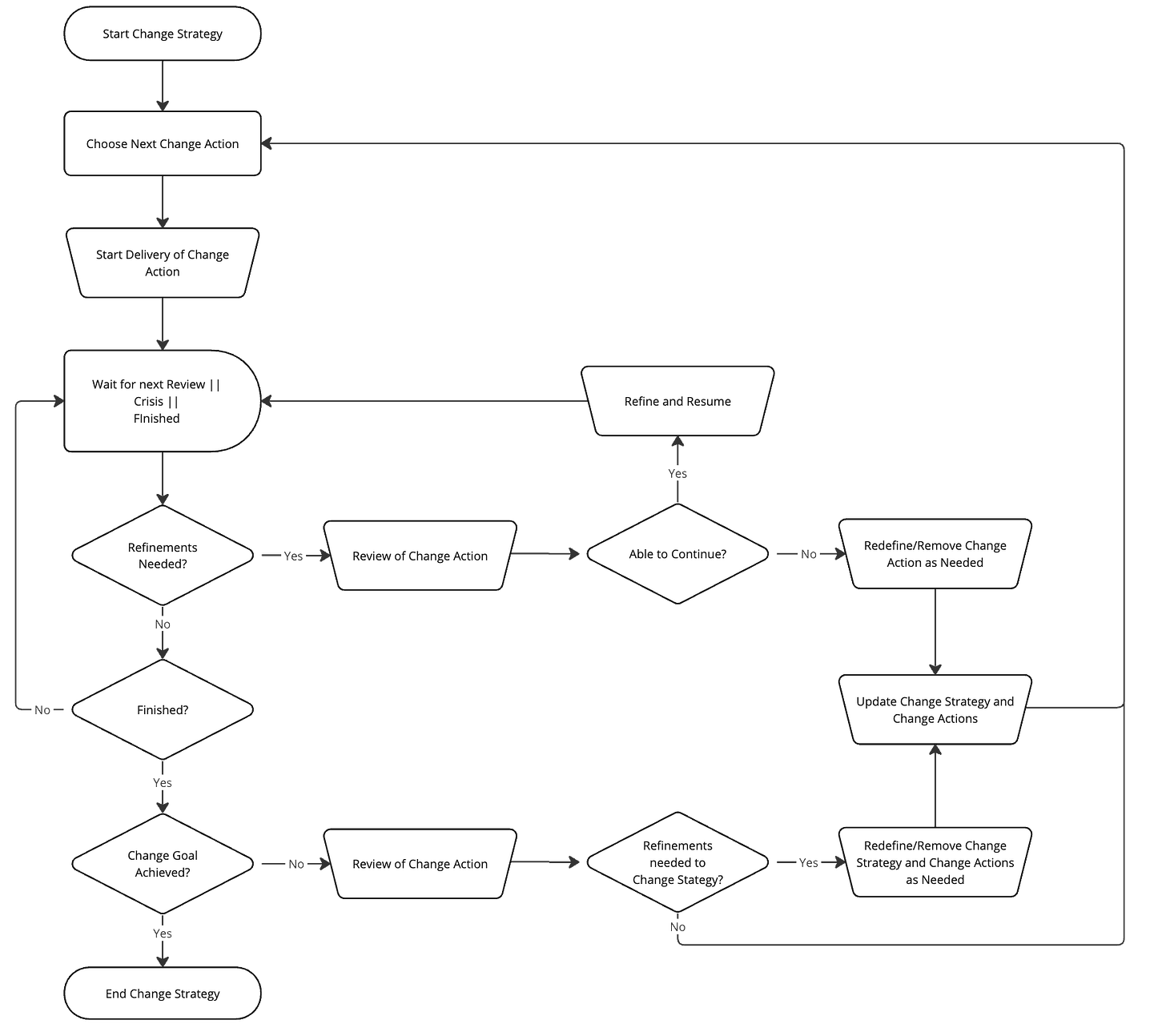Welcome to TL;DR. This is where we take a post from The Technician’s MBA and summarise the key points in less than 1000 words. The main post will contain more information regarding the points we highlight, and perhaps more than we summarise here; however we want to give you a quick read that can help peak your interest for those times you where you only have a few minutes to spare.
TL;DR Details:
Words: 739
Approx. Reading Time: 4-5 minutes
Link to Post:
Navigating Change Journeys
We are going to use the definitions outlined in a previous TL;DR and from the main article in this TL;DR; so if there are any unfamiliar terms you can check these to find them.
How do you start a “Change Journey”? Well first we need to address an uncomfortable fact.
No matter the type of change or its typical impact, at key points throughout any “Change Journey” (such as the start, or responding to crisis) you may have to make some uncomfortable decisions regarding who you want to come, or remain with you, on this “Change Journey”.
This is best explained by a story my father told me about a “Change Journey” he was a “Change Agent” for and it has stuck in my head ever since he first told it to me. The “Change Leader” said to the business:
As a business we are going on a journey together, we are doing this because we need to do so in order to remain at the forefront of our industry.
Some of you may not want to come on this journey; we will help you where we can to make it as easy and as painless as possible for you to leave.
Some of you we may not want to come on this journey; again we will help you where possible to make it as easy and as painless as possible for you as you leave the business.
For those we want to come on this journey, and want to come with us, we are excited for you to help us reach our goals, and face the challenges along the way, working together as a team.
This won’t be an easy journey but we believe the rewards will be worth the effort.
In just 5 sentences the “Change Leader” told them they were going on a journey; told them why they were going on this journey; highlighted there may be personnel changes, both voluntary and involuntary; and made it clear for those who come on the journey they were expected to contribute and help the journey reach its goals.
Not every “Change Journey” will require personnel changes from the offset, but some will. This is an unfortunate side of “Change Management” and probably why people are afraid when they hear the term.
However, these situations are best handled openly and honestly to minimise the negative impacts on morale.
If you don’t have to make any of these decisions, how you start a “Change Journey” is to:
Look at your “Change Strategy”
Pick a viable “Change Action”
Brief the people involved in the “Change Action”
Start the “Change Action”
Whilst the 6Ps are true - Proper Preparation and Planning Prevents Poor Performance - we can sometimes get stuck in an endless planning loop. Yes, it is important to plan and strategise, but there comes a point where the only way in which you can refine your plan further is to start delivering it.
Will it go to plan? Almost certainly not. However, through the combination of “Change Management”, your project delivery skills, your team management skills, and the support of the business groups around you; you are prepared to handle the situations the business may encounter during this “Change Journey”.
When you are delivering a “Change Strategy”, it is vitally important that you review it after every completed “Change Action”. Like any journey you might be forced to make detours along the way, and that’s fine; however you can do more damage than good if you ignore this and just plough on in the face of currently insurmountable obstacles.
Here is a flowchart that illustrates how I approach the delivery of a “Change Strategy”:
You can see during the delivery of each “Change Action” that there are breakpoints; these breakpoints are triggered by periodic review, encountering “crisis”, or if we have finished the change action. At each of these breakpoints we review the “Change Action”, either resuming or making amendments as necessary. Then, once we complete the “Change Action”, we review our “Change Strategy” making amendments as necessary too. Then we pick the next “Change Action” and continue until we reach our “Change Goal”.
This delivery of a “Change Strategy” is wholly separate from the delivery of a “Change Action” as each change action might need a different method of delivery based upon the teams involved. This process looks to ensure that the “Change Journey” continues making progress.
GTFYT
If you liked this please consider subscribing, and you can find the link to the main post, where you can find more information about this topic, below.
Your Change Management Guide
Fair warning this is a long post with a lot of information within. The term Change Management scares many people when they hear it, and the length of this article may be intimidating; but once you are familiar with it you realise that done right, it shouldn’t be intimidating at all.





